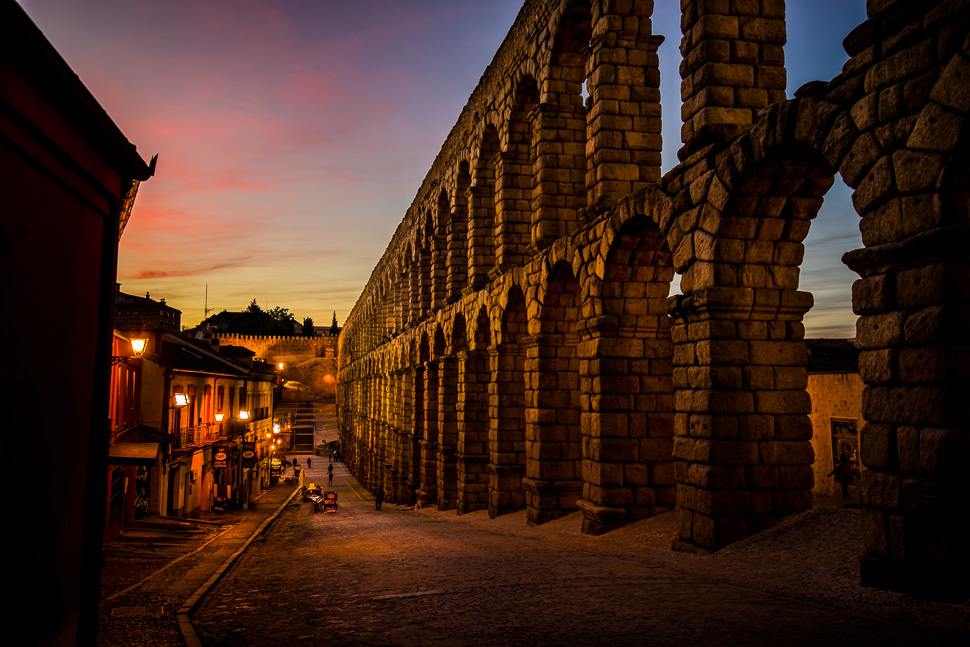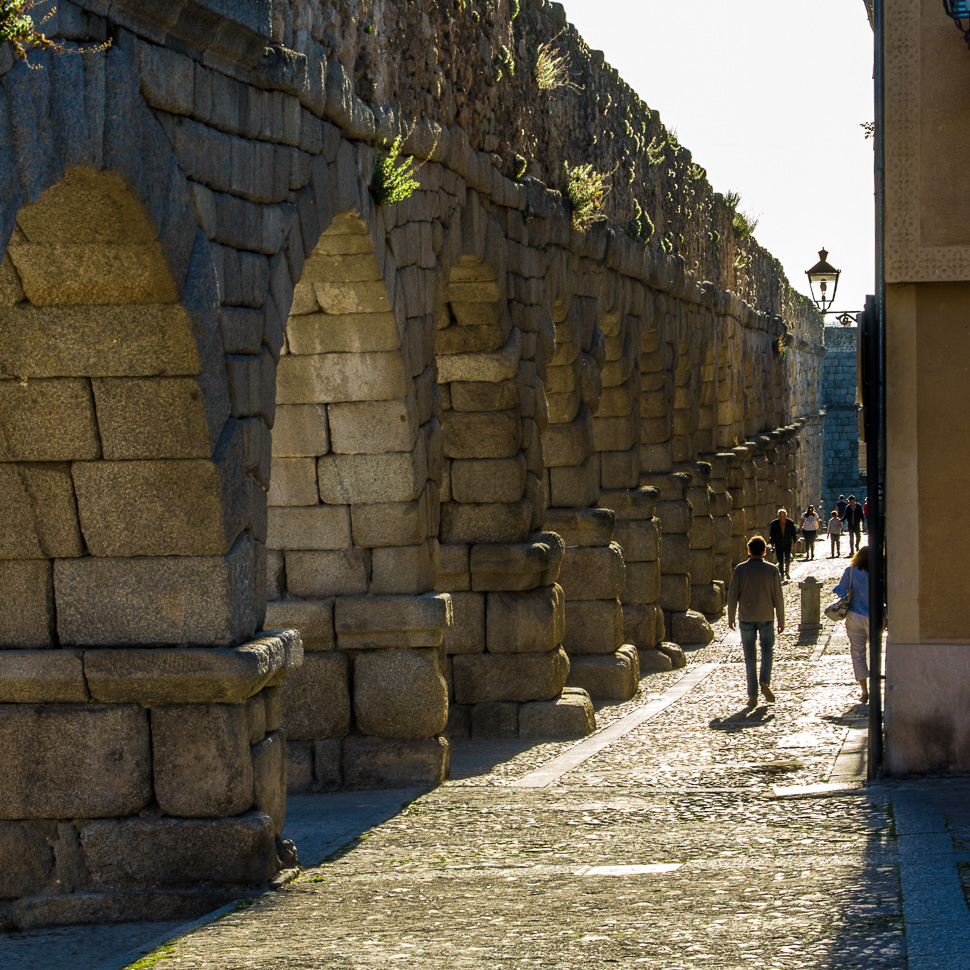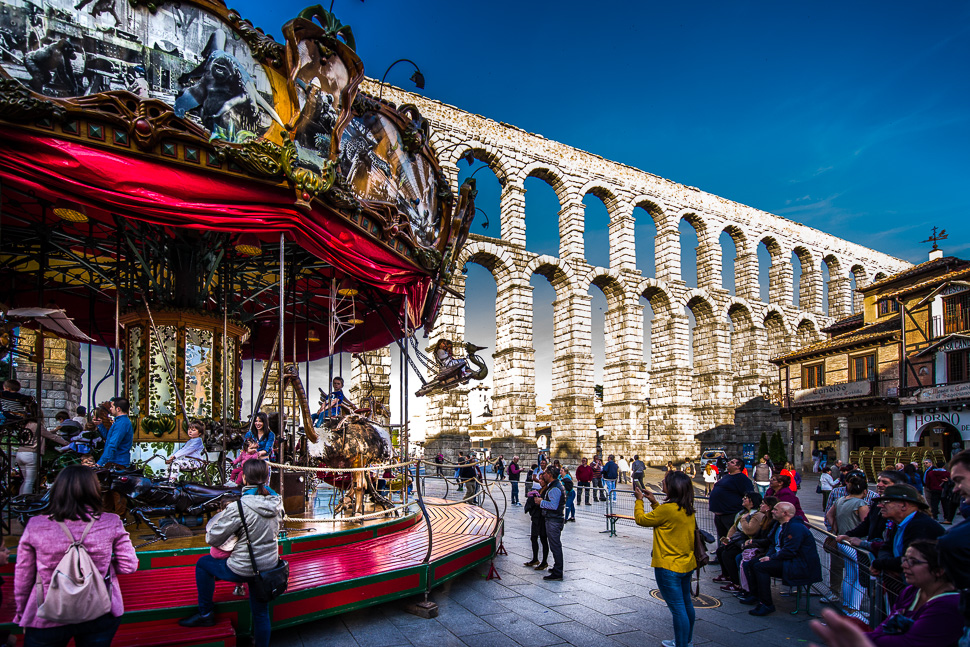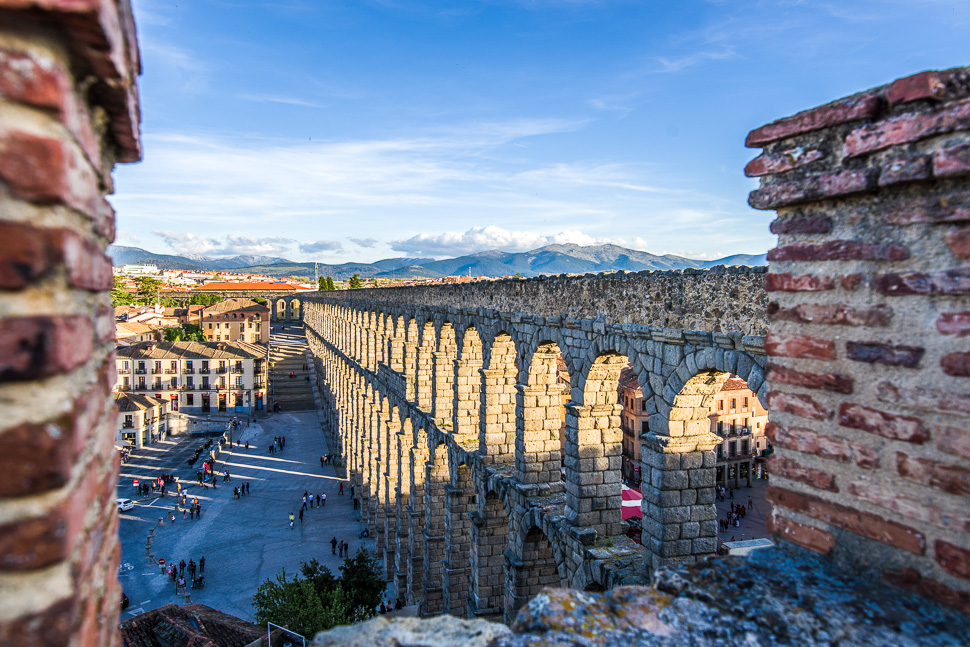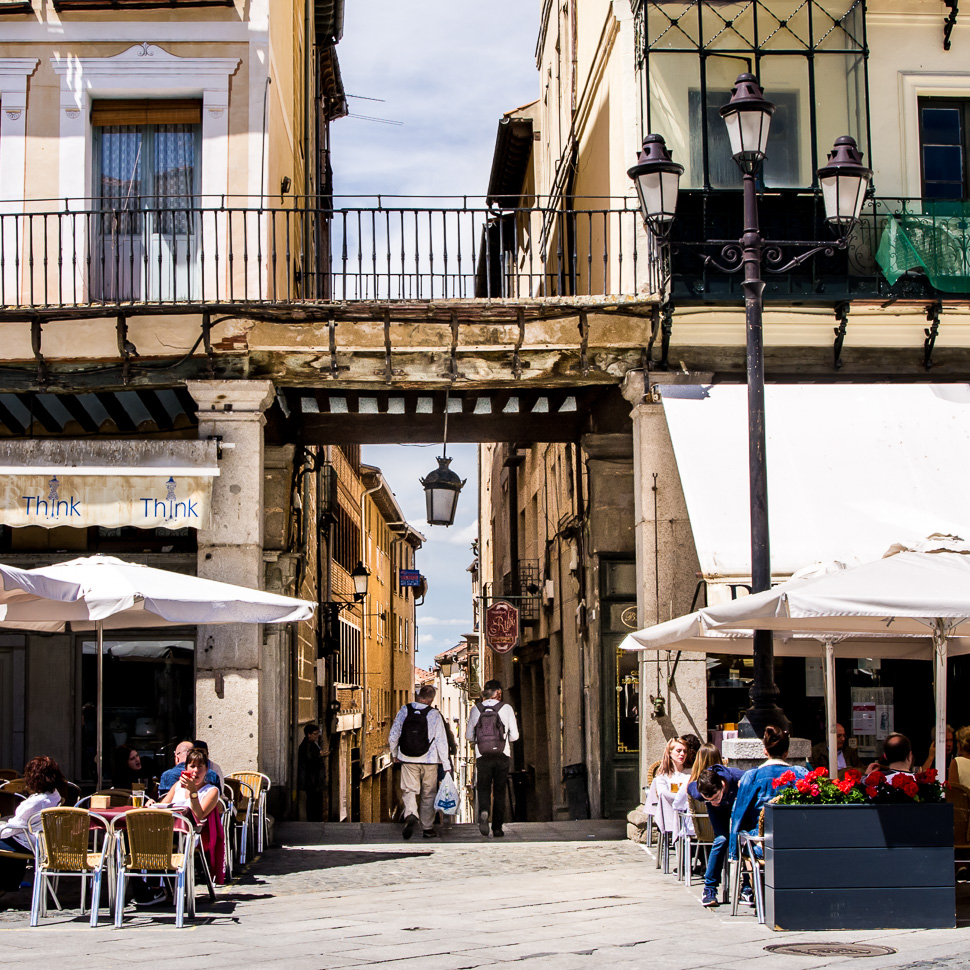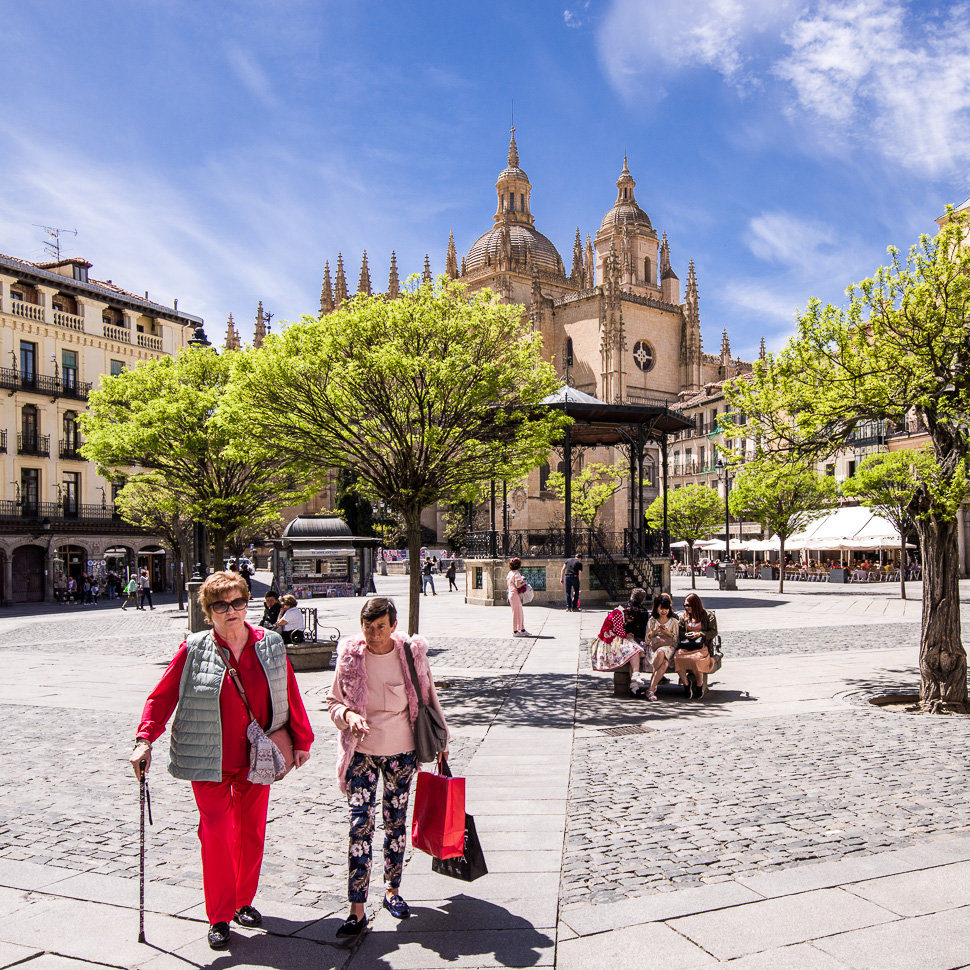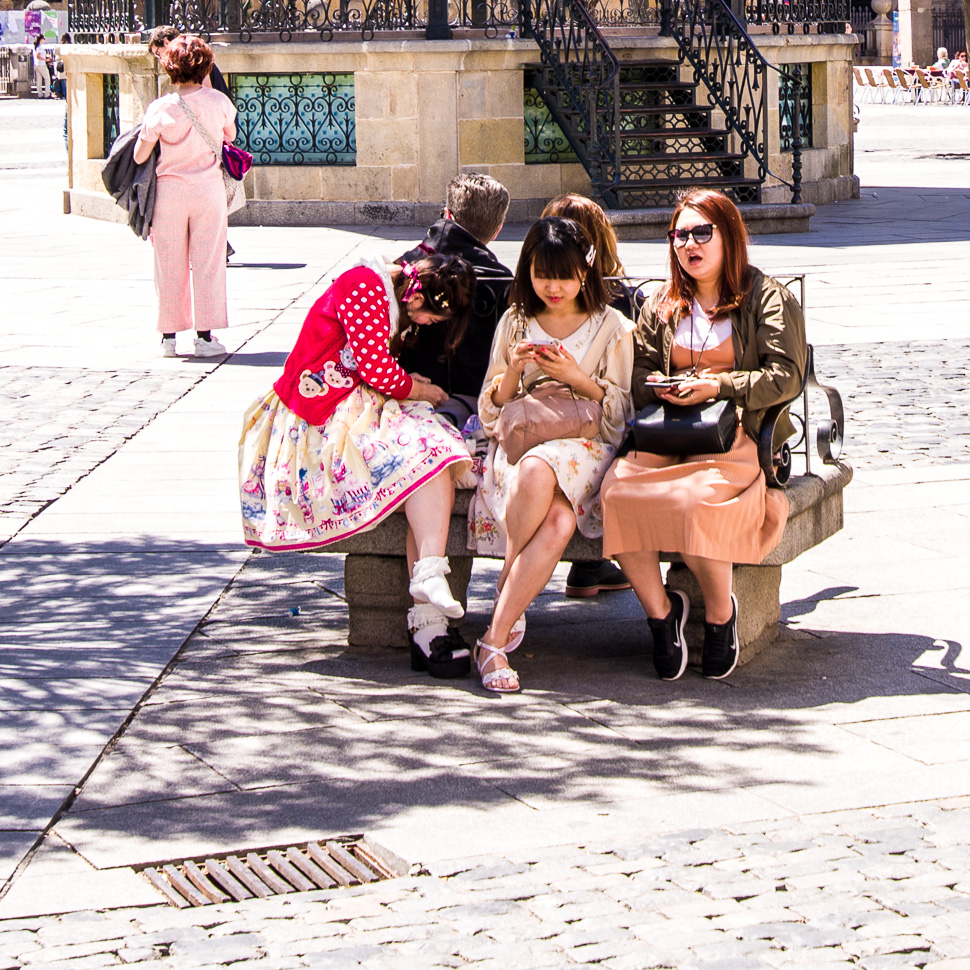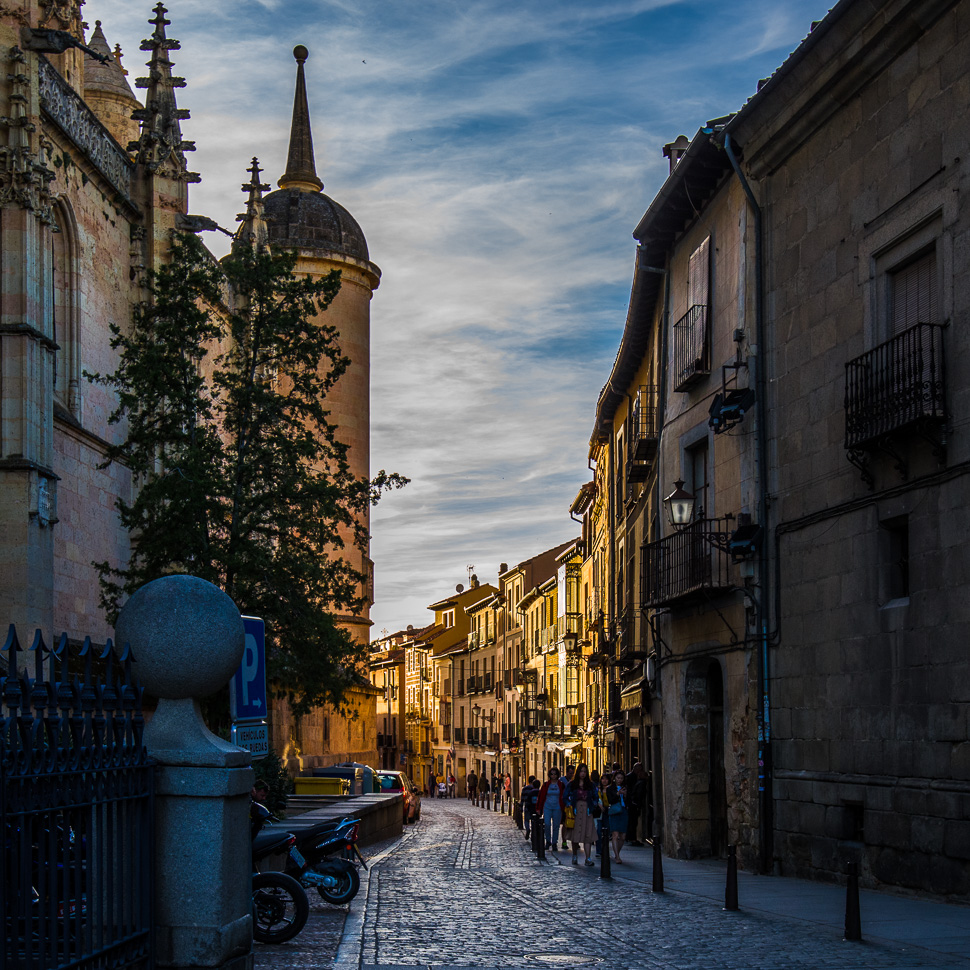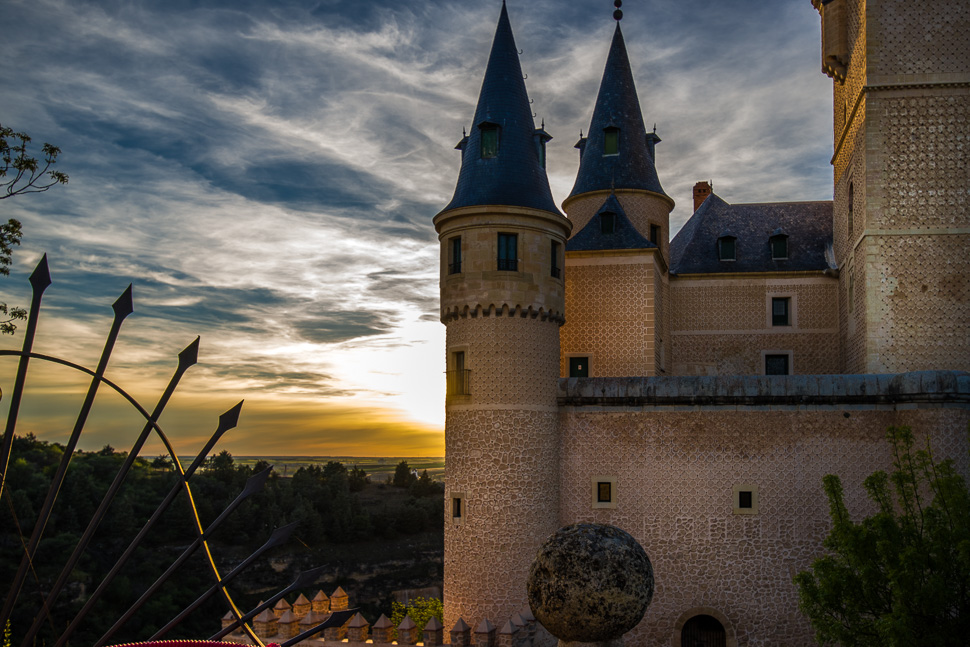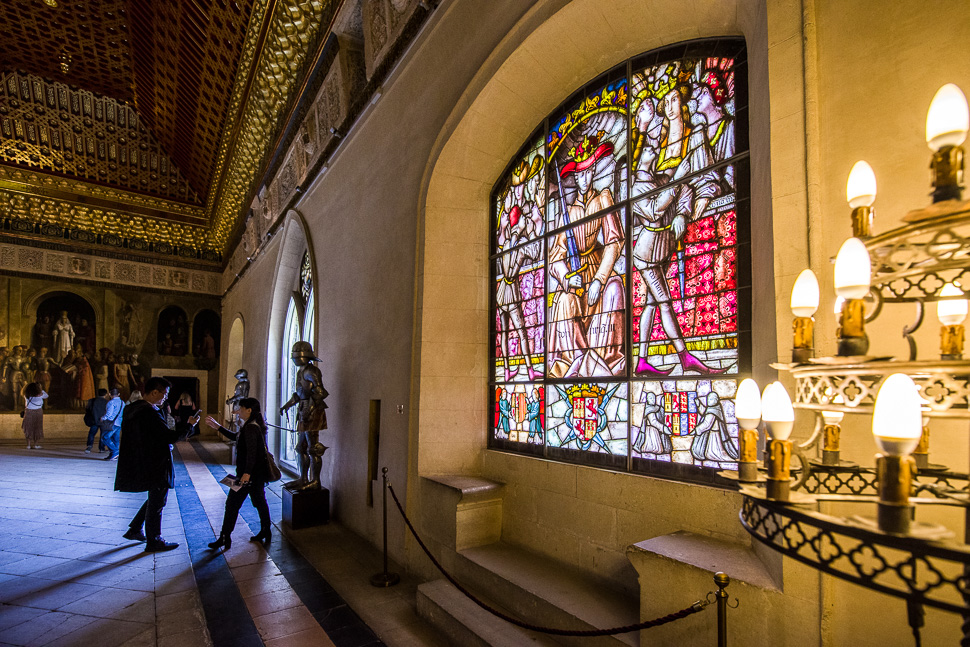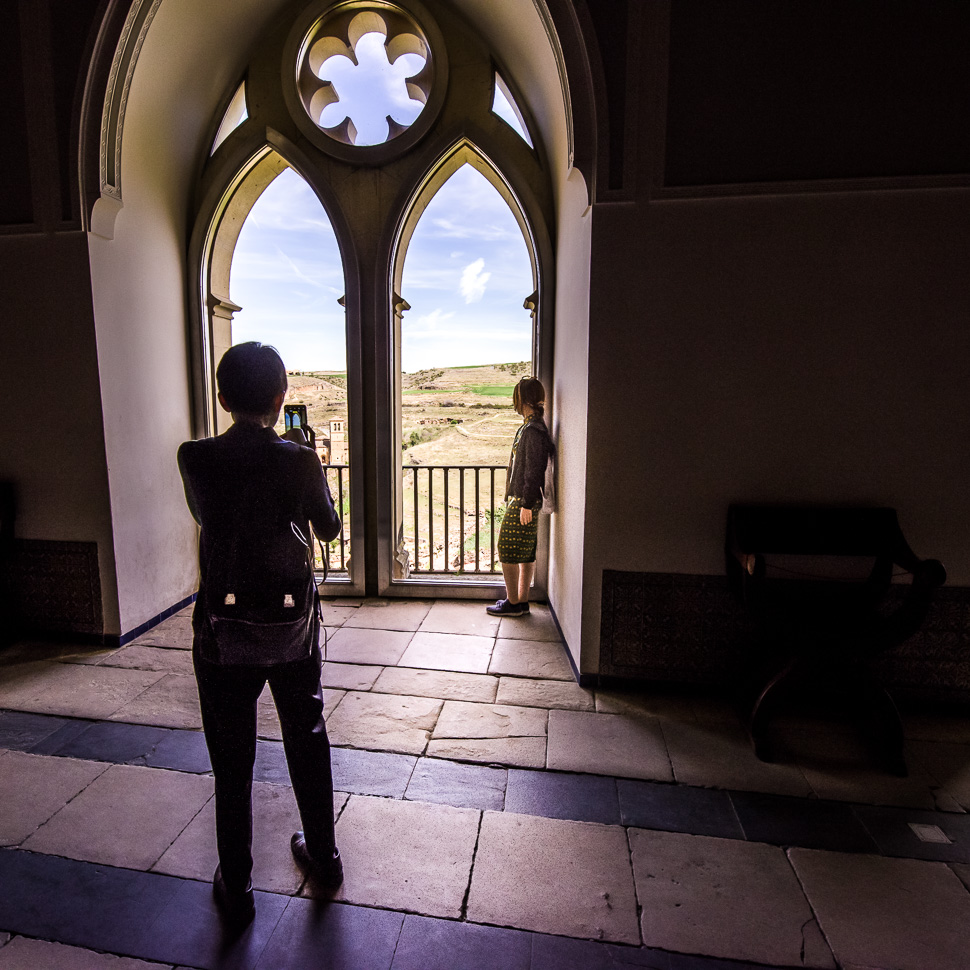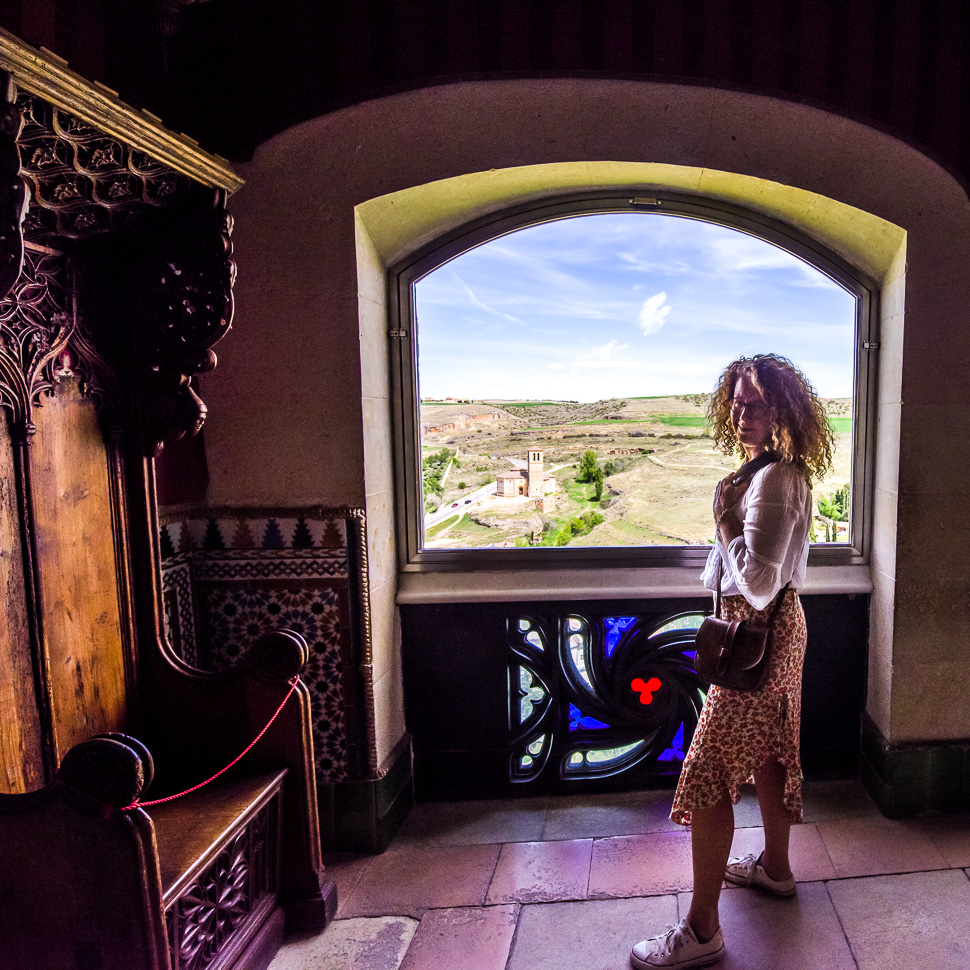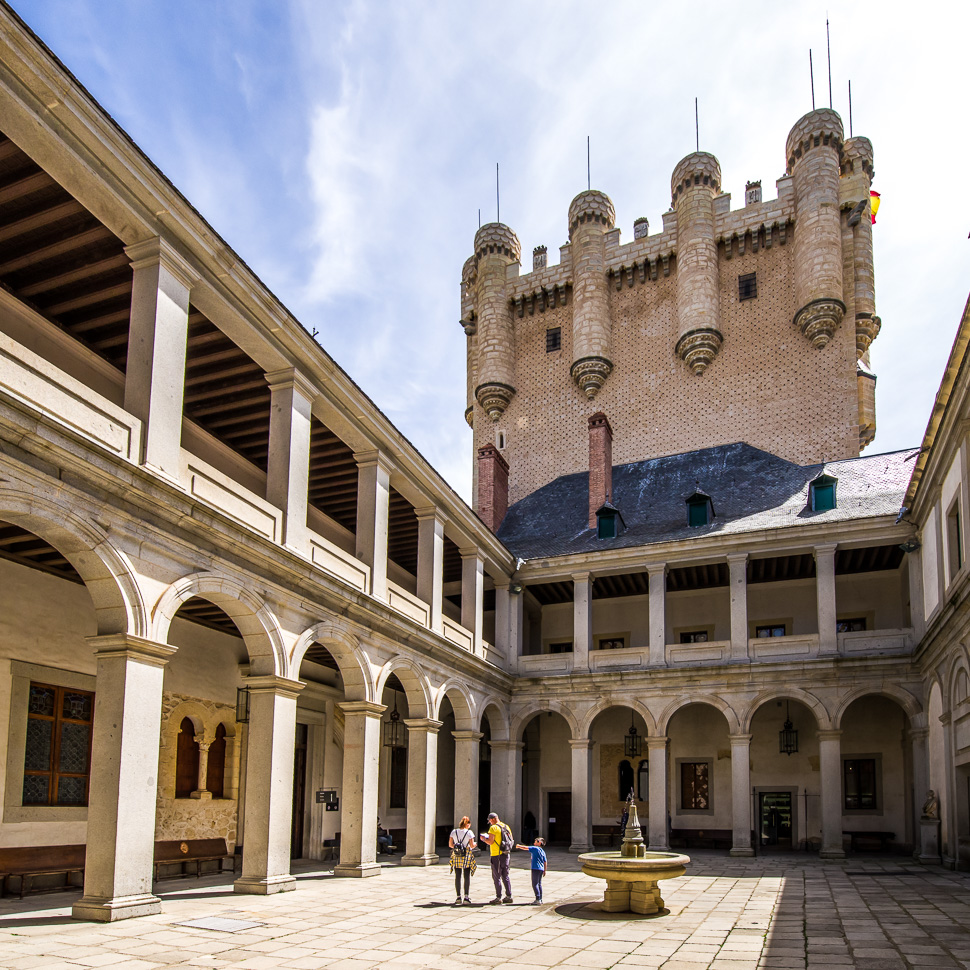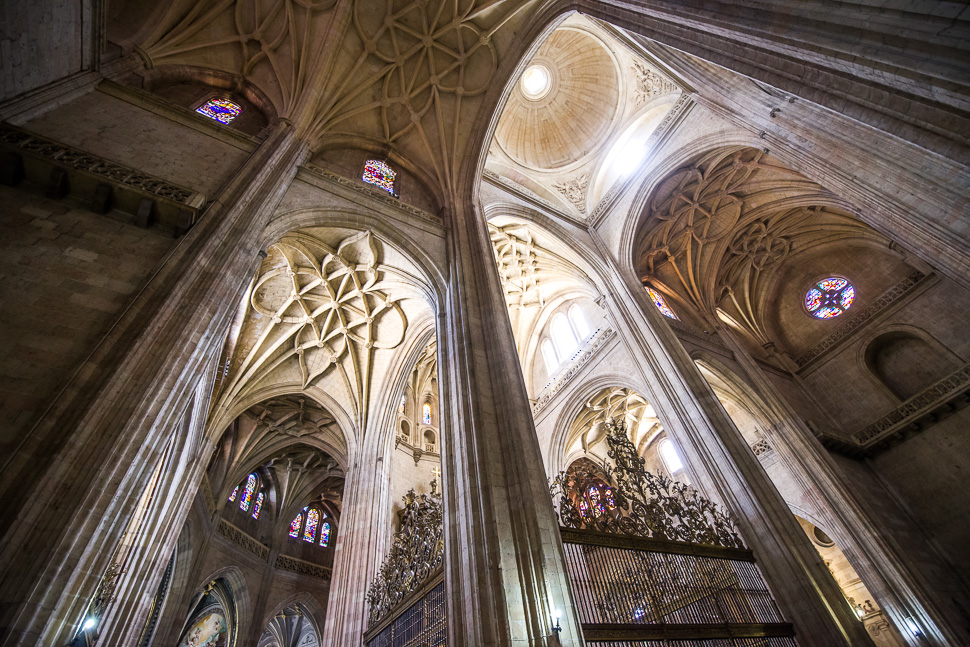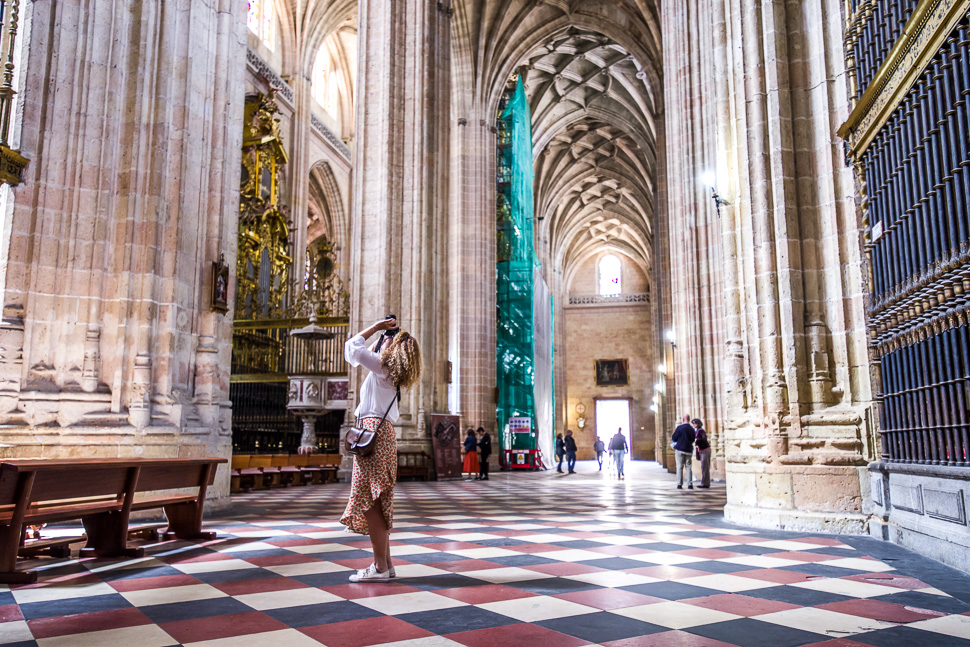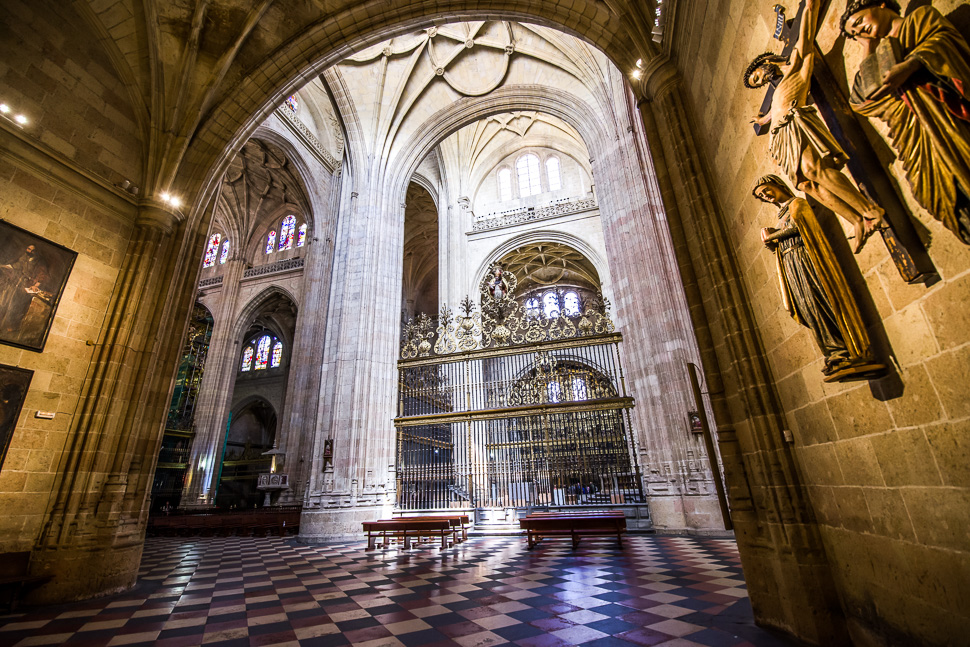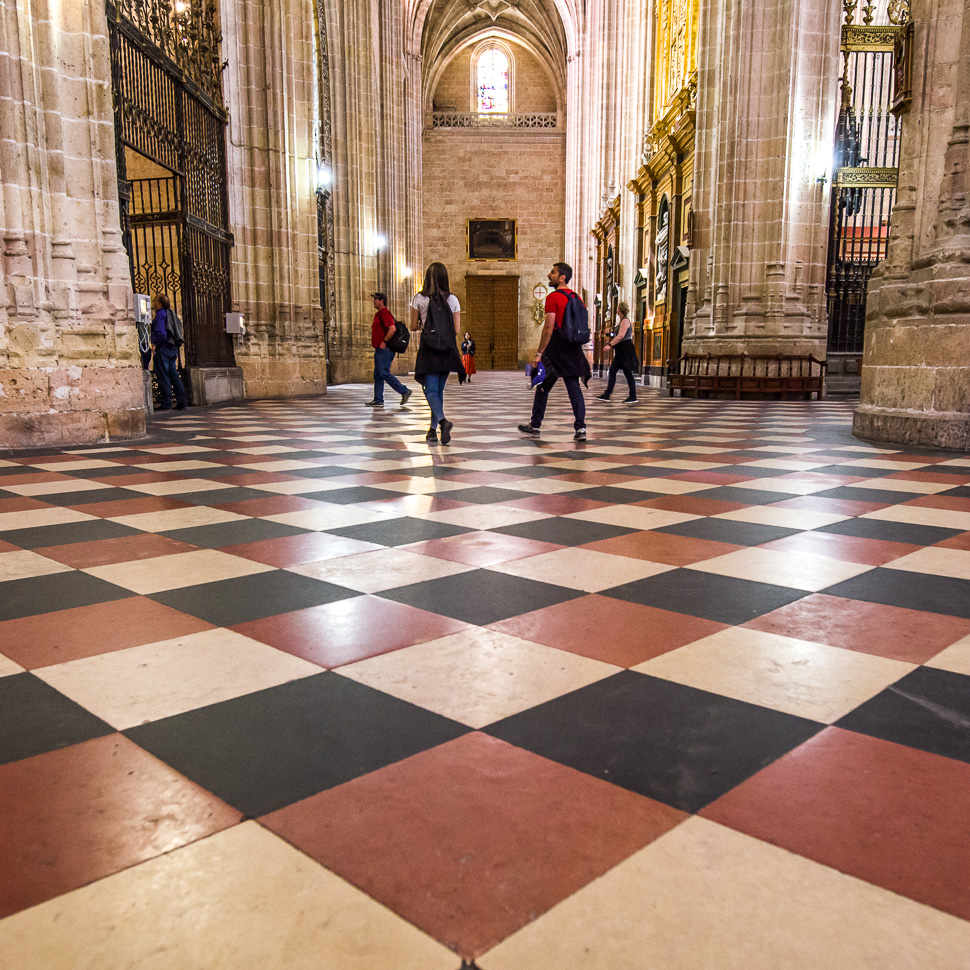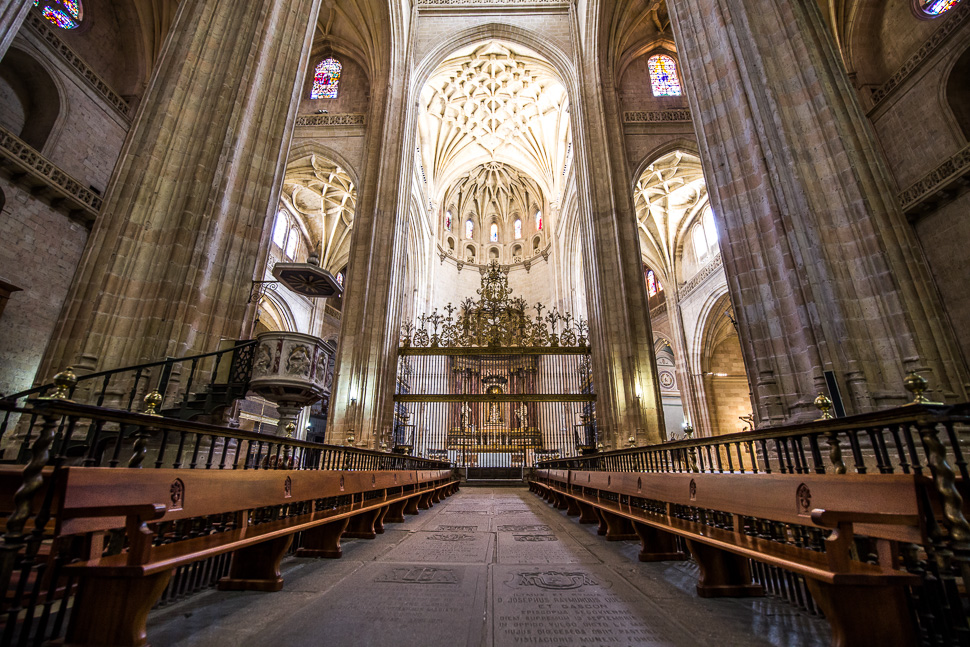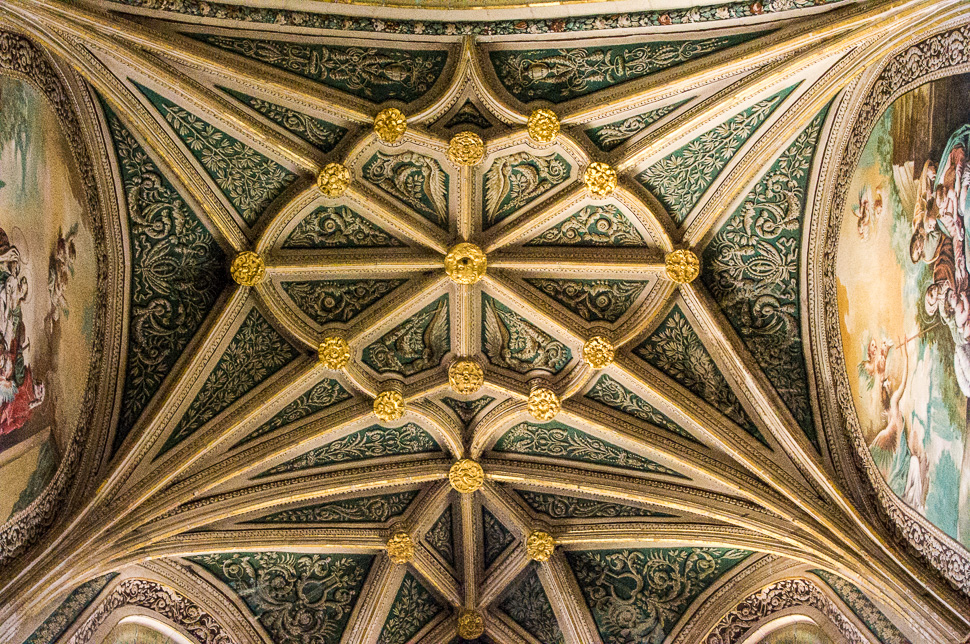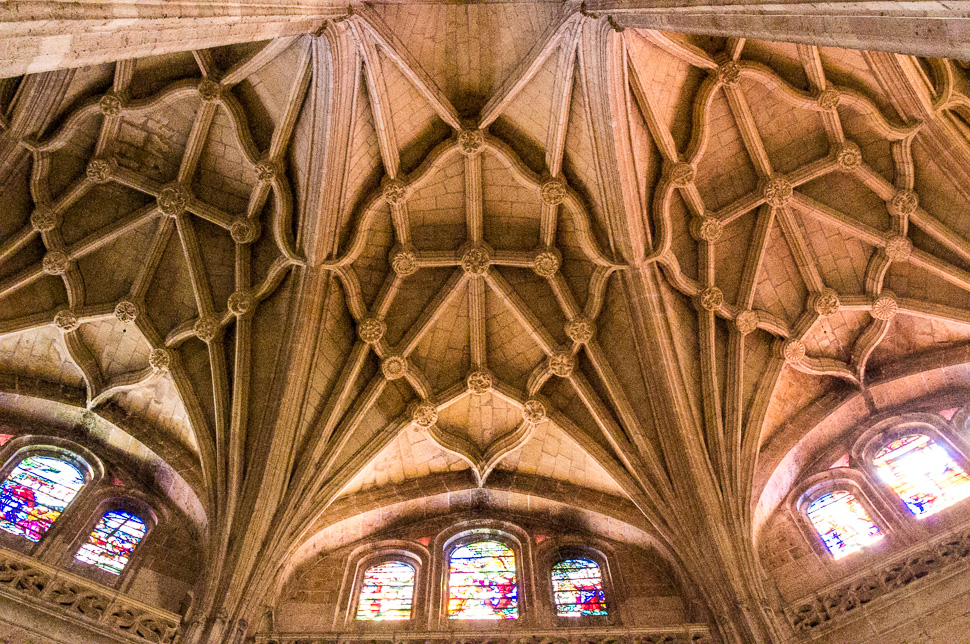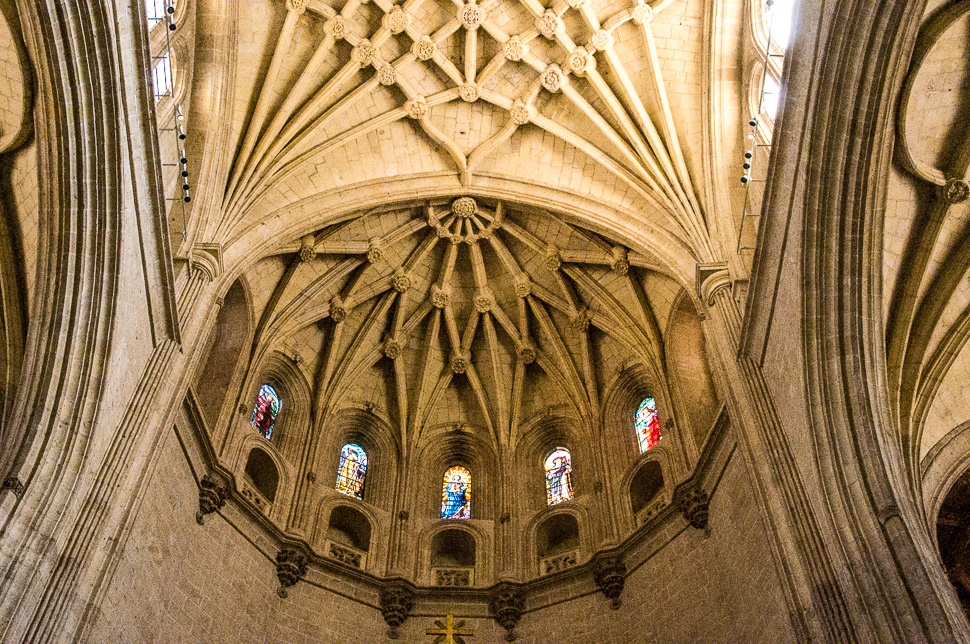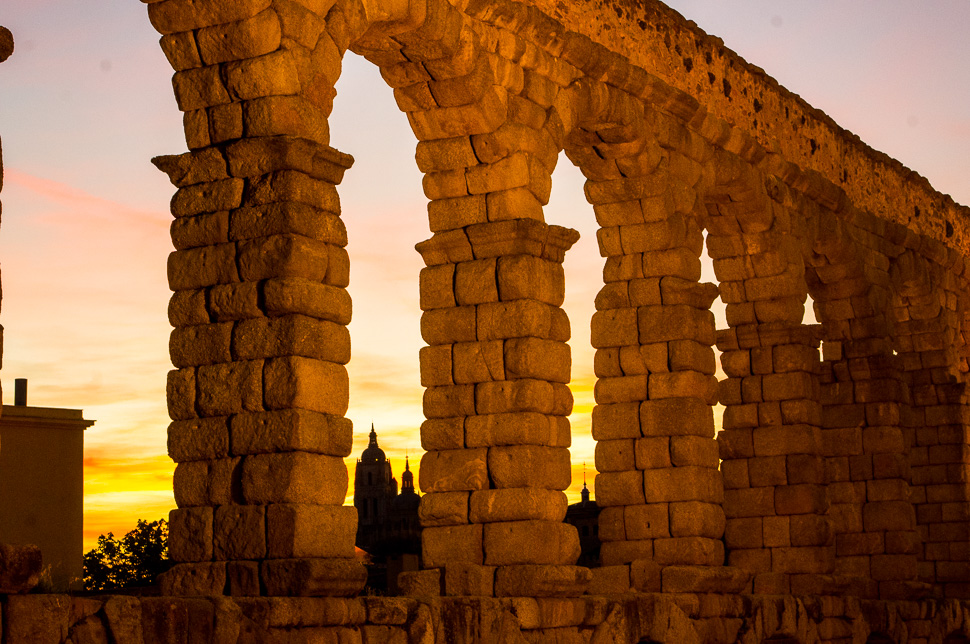We didn’t reach Segovia by bike along the Via Verde (earlier post), but we drove there instead and got a first impression by walking into town in the late afternoon.
Already from the distance, Segovia looked very spectacular with the Alcázar in the front, the big cathedral in the heart of the old town and the snow covered Sierra de Guadarrama in the back.
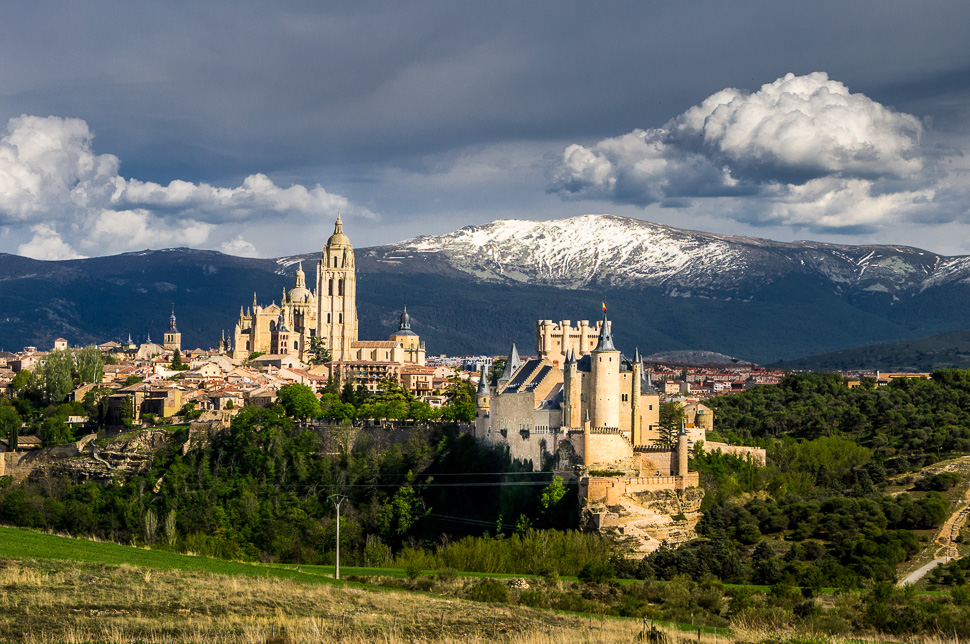 |
| Segovia |
It was just a short walk from the official camper parking to the famous Roman aqueduct which leads into the centre and to the Alcázar. It was built in the first century to transport water from Rio Frio over 15 km before arriving in the city. In town it makes an abrupt turn and then the monument begins to display its full splendour. Here, the aqueduct reaches a height of up to 28.5 m. In total there are 167 arches which were built of brick-like granite blocks without any mortar. It had been kept functioning throughout the centuries and provided water to Segovia until the mid 19th century.
The next day, we went into town again to visit the most important buildings like the Medieval Alcázar and the cathedral. From the aqueduct, we climbed the hill through a street full of little shops to the Plaza Mayor where many restaurants wait for tourists.
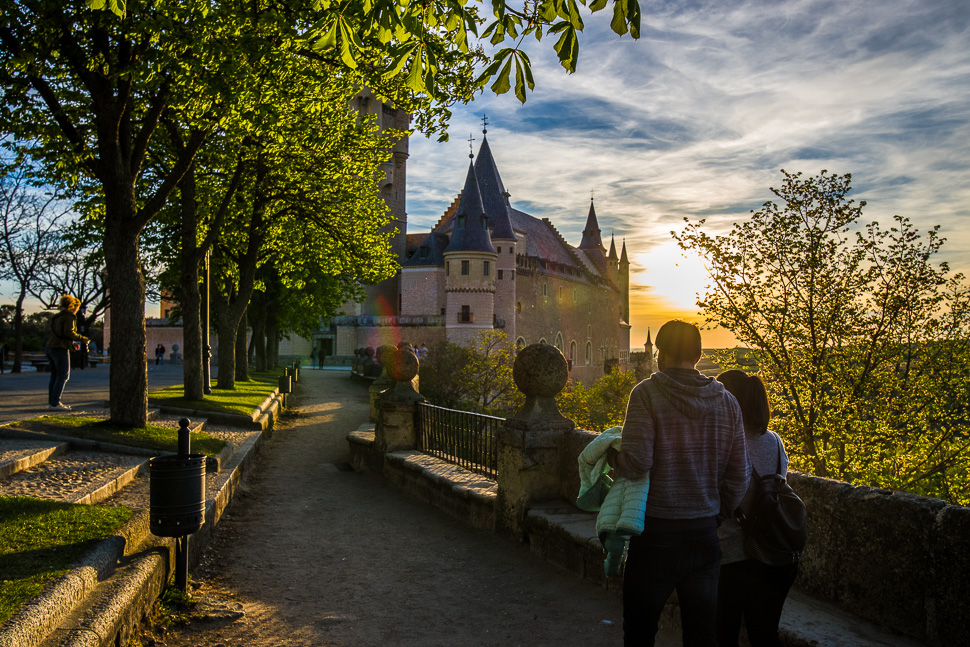 |
| Alcázar in the evening |
The Alcázar of Segovia is the most distinctive castle-palace in Spain by virtue of its shape – like
the bow of a ship. It was originally built as a fortress, but has served as a royal palace, a state prison, a Royal Artillery College and a military academy since then.
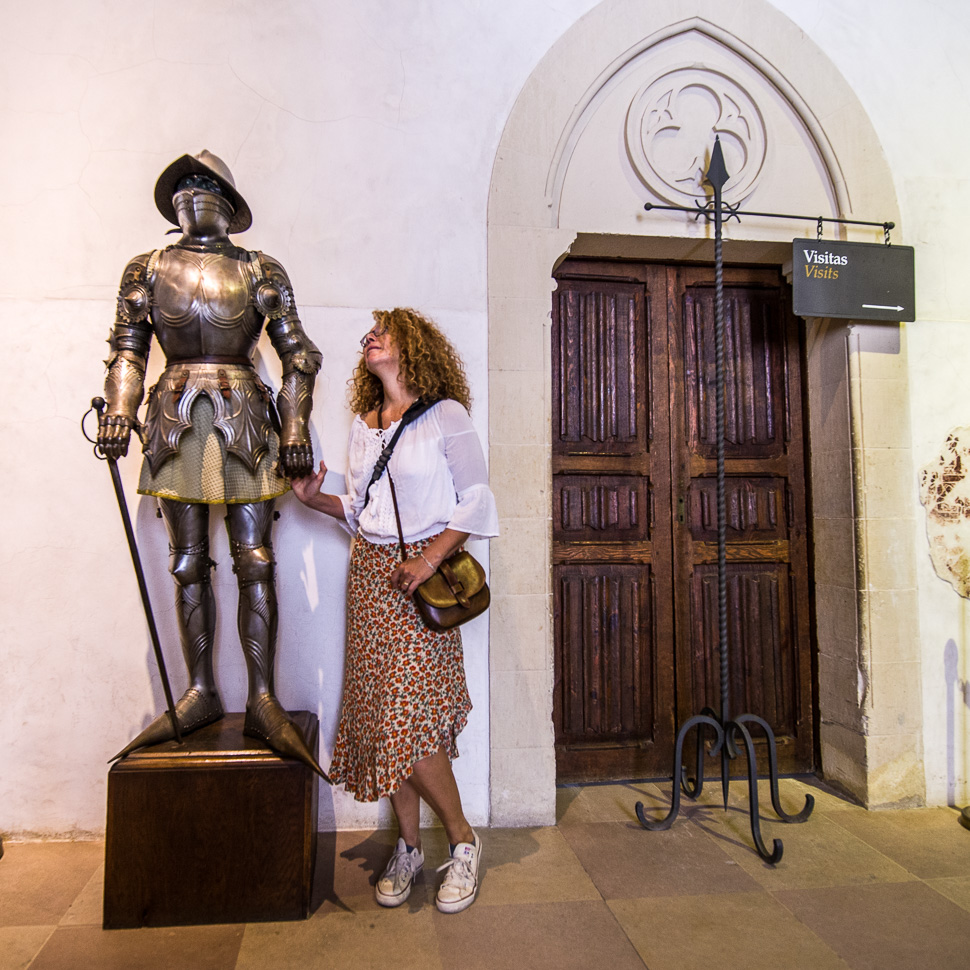 |
| My knight 🙂 |
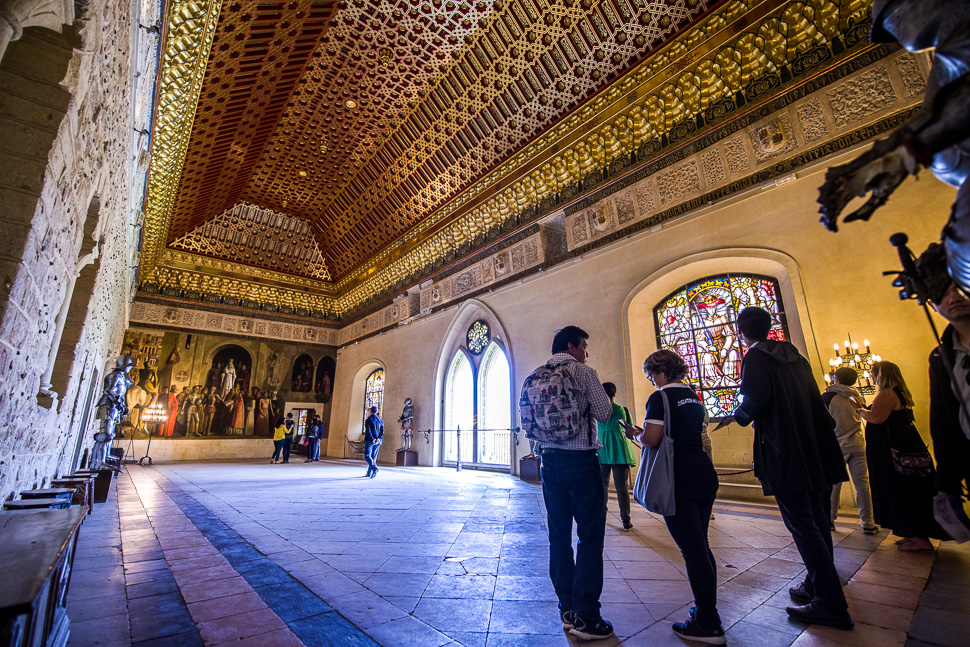 |
| Hall of the Galley |
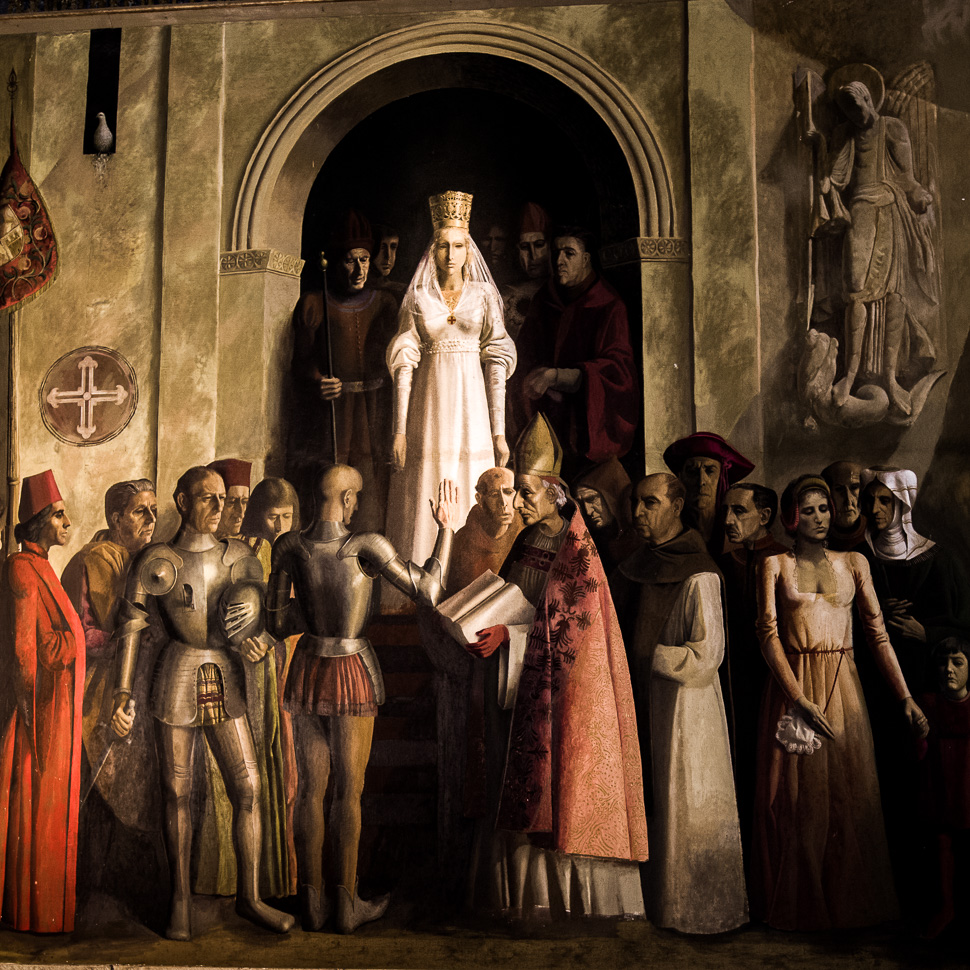 |
| The coronation of Isabella I of Castile |
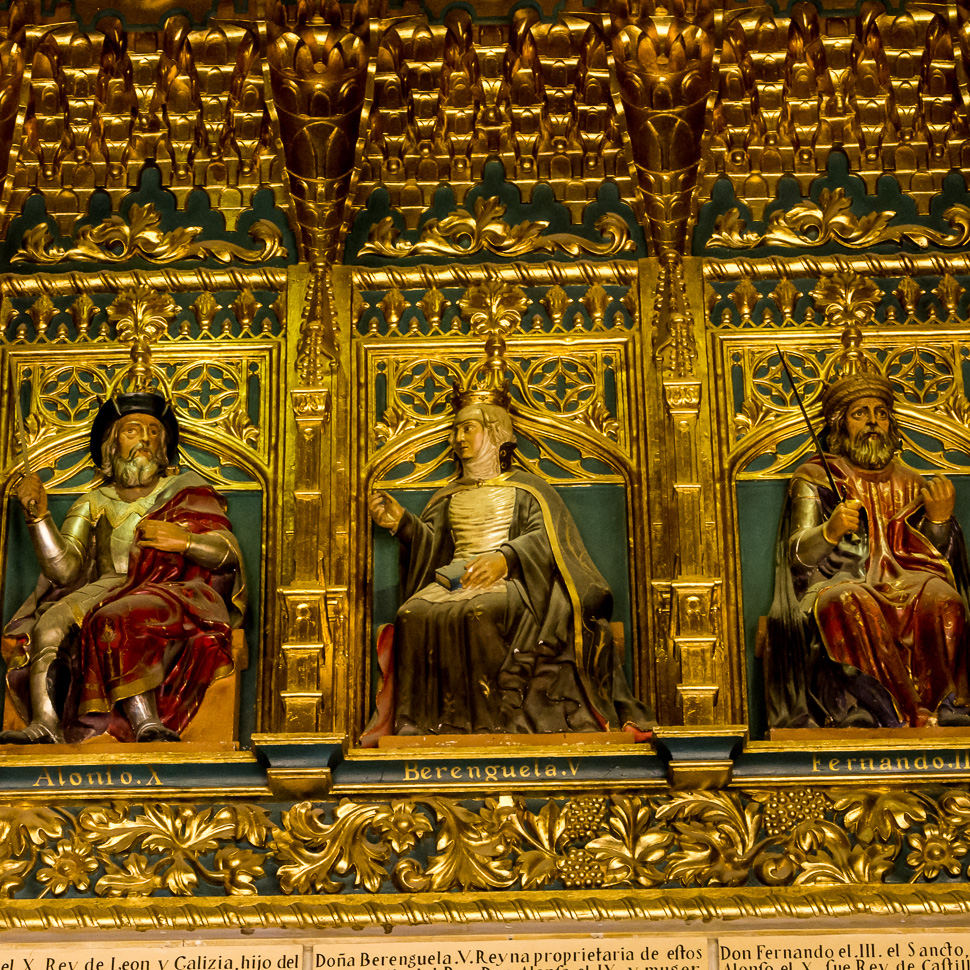 |
| Hall of the Kings |
After the Alcazar, we first needed a lunch break at the Plaza Mayor before we went into the huge cathedral which was built in a Gothic style in the mid-16th century – the last Gothic cathedral in Spain! The Gothic vaults are 33 meters high by 50 meters wide and 105 long. For us, the net vaults were the most impressive part of this cathedral.
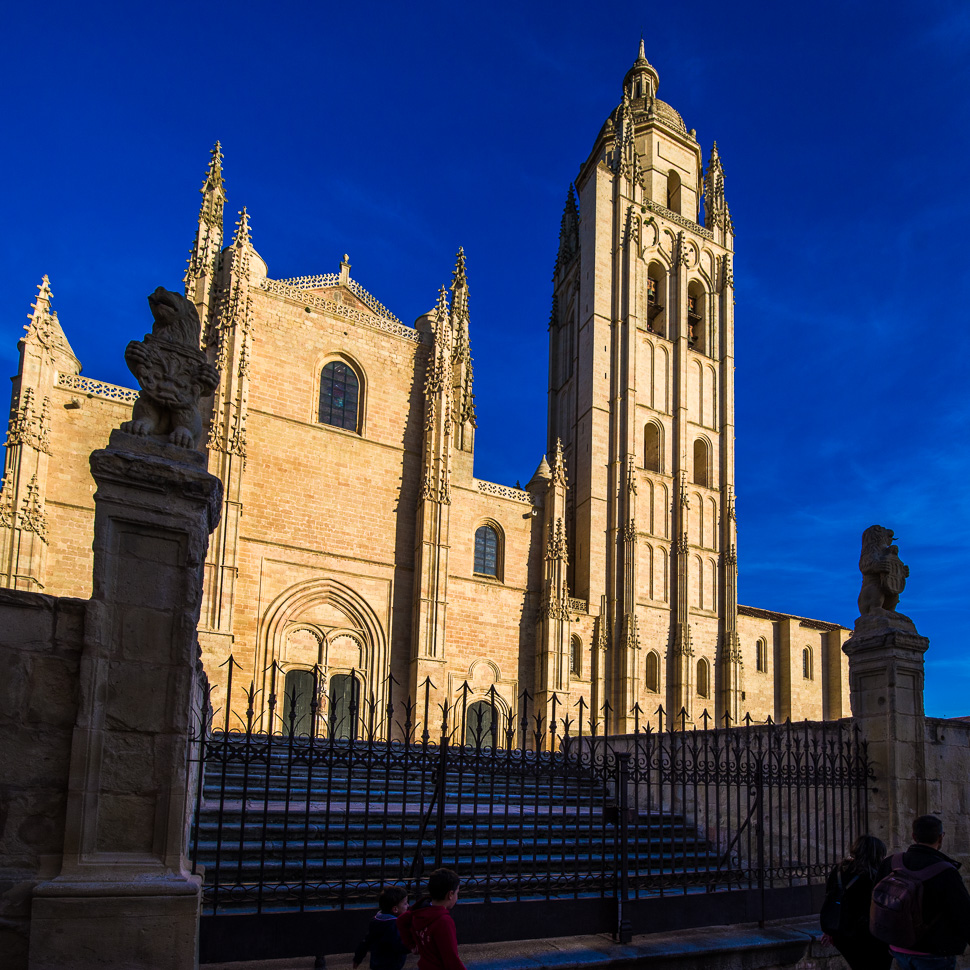 |
| Bell tower – with 88 m an imposing appearance |
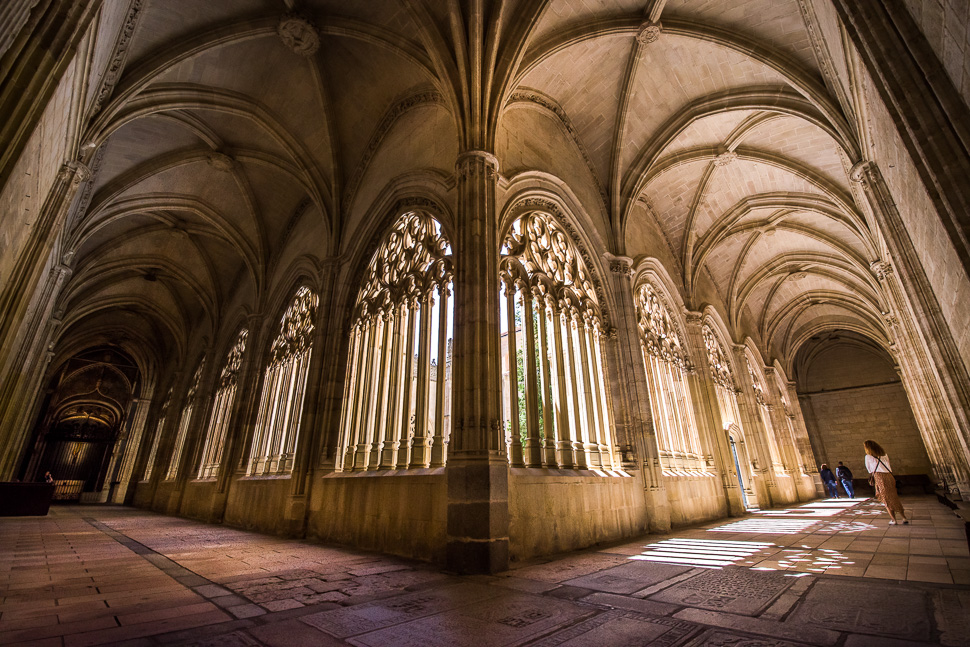 |
| Cloister of the cathedral |
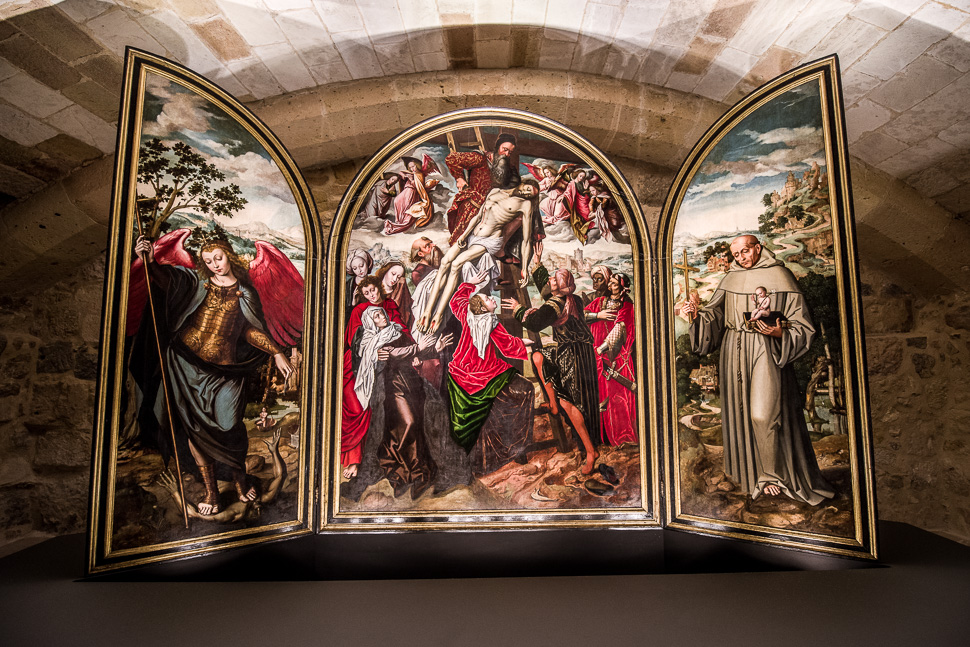 |
| Powerful altarpiece |
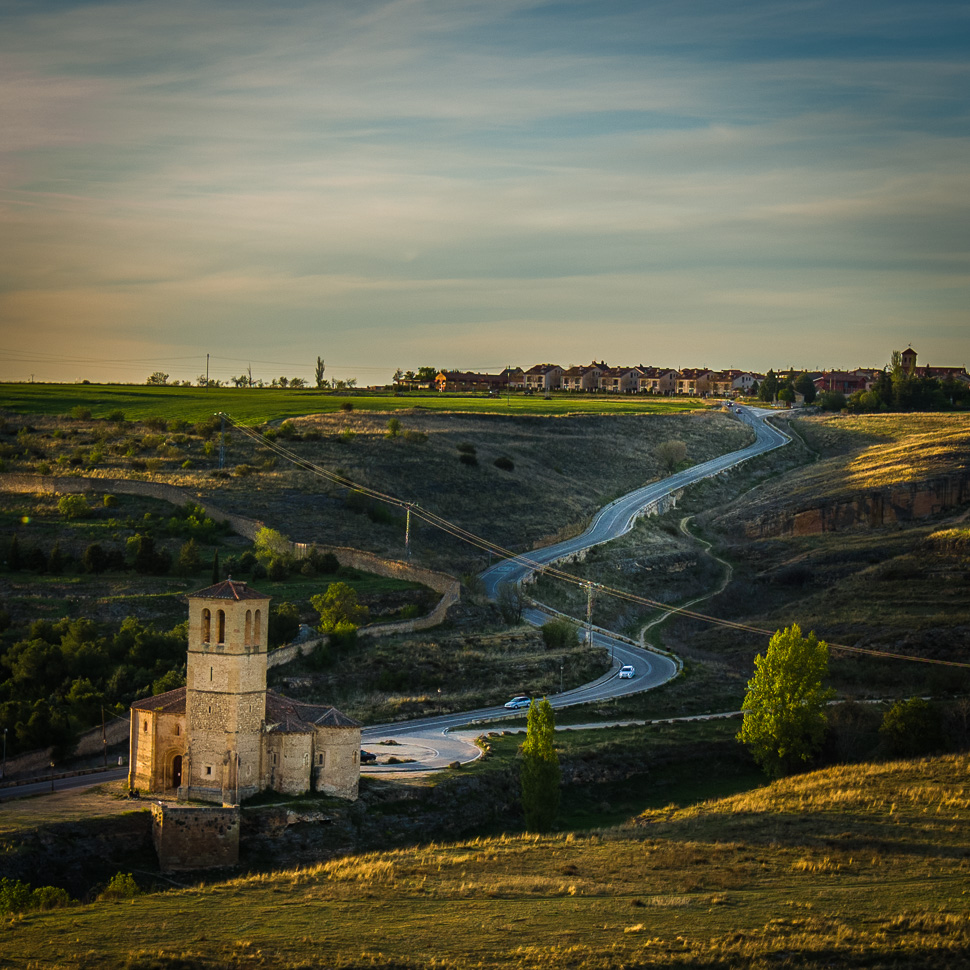 |
| Iglesia de Vera Cruz |
The 12-sided Iglesia de Vera Cruz is one of the best preserved of its kind in Europe.
Built in the early 13th century by the Knights Templar and based on Jerusalem’s Church of the Holy Sepulchre, it once housed a piece of the Vera Cruz (True Cross). Sadly the church was closed on Monday, so we will have to come again!
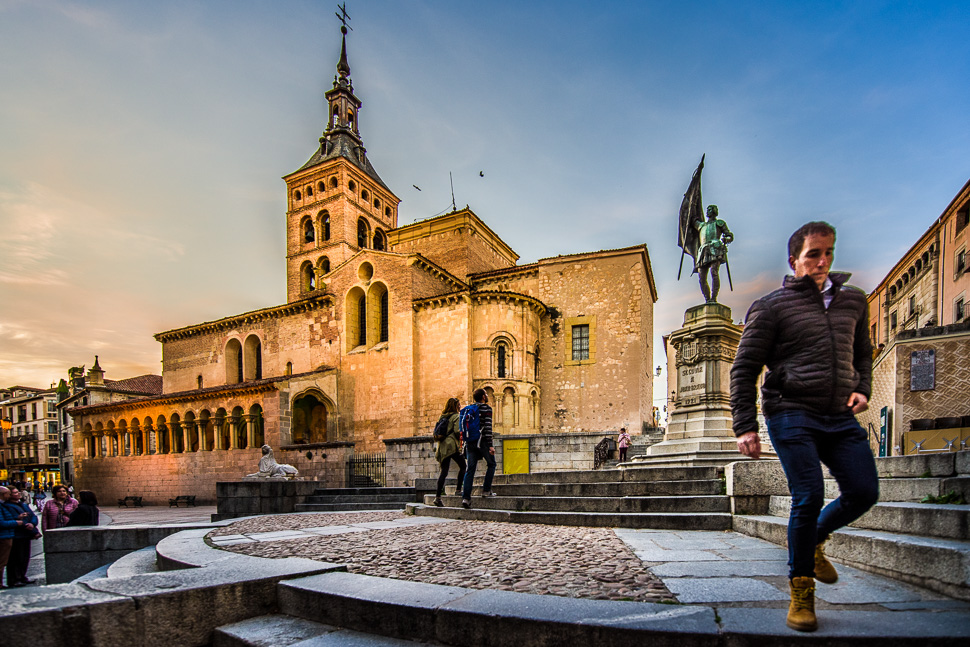 |
| Church of San Martín |
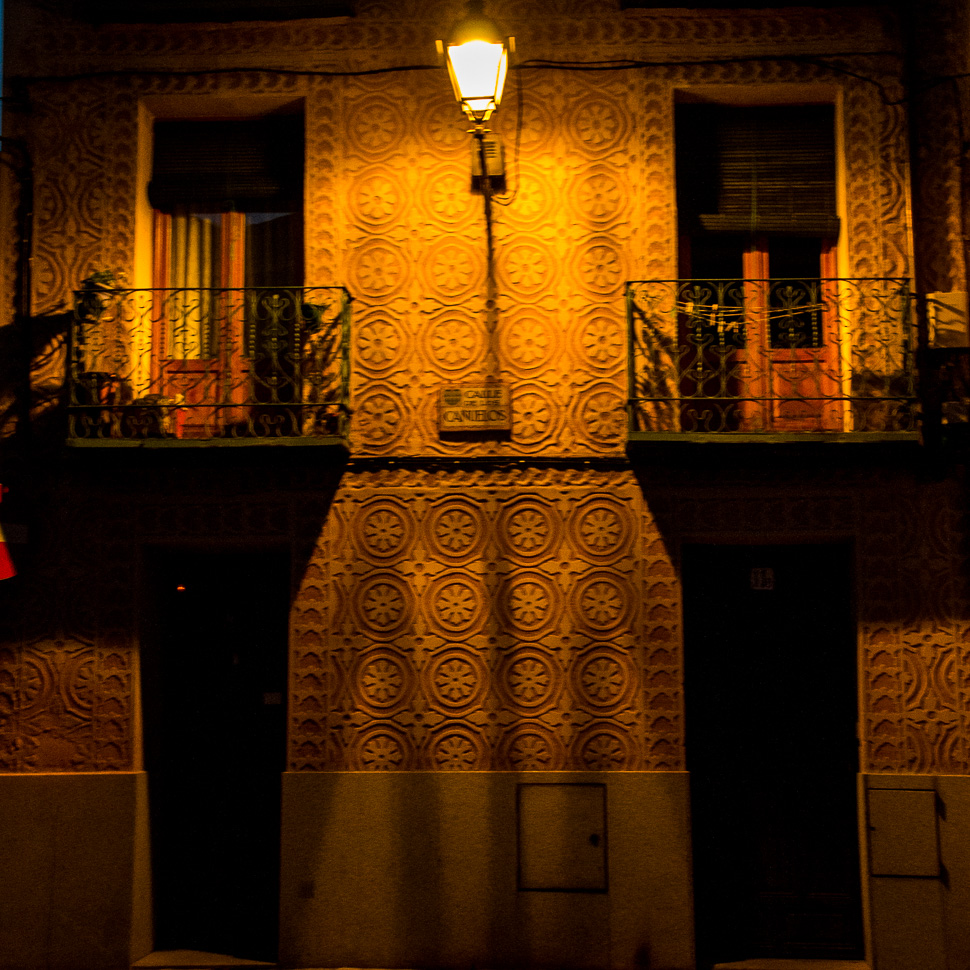 |
| A spectacular but flowerless day! |
